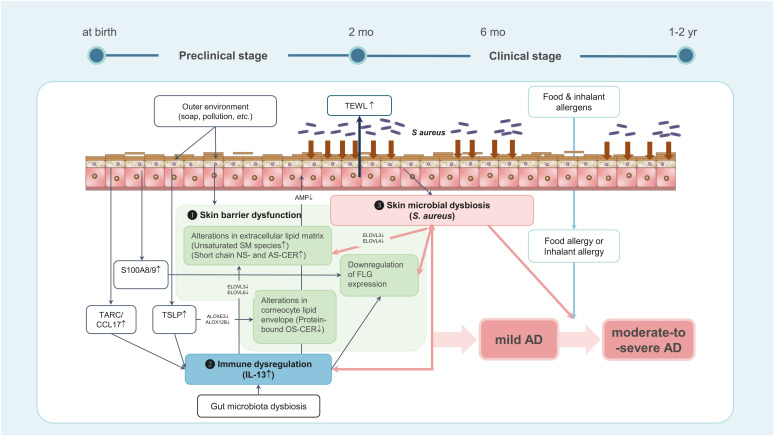Fig. 1. A hypothesis concerning the early events in the skin leading to AD development during early infancy. Levels of TSLP, TARC/CCL17 and type 2 cytokines such as IL-13 are elevated in the skin within the first 2 months of life. This initiates immune dysregulation and alterations in the protein and lipid composition of the skin barrier. Subsequently, there is a decrease in filaggrin expression accompanied by changes in the skin microbiome, culminating in the onset of AD during infancy. Conversely, in infants with filaggrin mutation, diminished filaggrin expression may be evident before 2 months of age, potentially leading to the early onset of severe AD.
AD, atopic dermatitis; TSLP, thymic stromal lymphopoietin; TARC, thymus and activation regulated chemokine; CCL17, chemokine (C-C motif) ligand 17; IL, interleukin; TEWL, transepidermal water loss; AMP, antimicrobial peptide; SM, sphingomyelin; NS-CER, nonhydroxy fatty acid sphingosine ceramide; AS-CER, alpha-hydroxy fatty acid sphingosine ceramide; FLG, filaggrin; OS-CER, ω-hydroxy fatty acid sphingosine ceramide.

